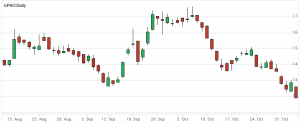For those who would like to invest actively, you will need to deal with stock brokerage firms. A brokerage firm is a group of stock brokers who buy shares for a low price and sell these at a higher price on the stock market. To be able to buy or sell in your name, you need to have the services of a stock broker, a licensed professional from the brokerage firm.
This is not monopoly. There are many stock brokerage firms that will compete for your business and trade orderly among professional brokerage firms as well as online brokerage firms. To hire the services of a brokerage firm is not difficult at all, however, you need to decide the kind of investor that you want to be.
 First of all, you will need contacts as well as resources to assist you in getting things done. If you like a traditional bank or if you are new with investing, working with a well-known brokerage firm with a reputation and experience may feel reassuring. Examples of such financial establishments include Morgan Stanley, Merrill Lynch, JP Morgan and Smith Barney.
First of all, you will need contacts as well as resources to assist you in getting things done. If you like a traditional bank or if you are new with investing, working with a well-known brokerage firm with a reputation and experience may feel reassuring. Examples of such financial establishments include Morgan Stanley, Merrill Lynch, JP Morgan and Smith Barney.
Some mutual fund providers may also act as a broker for you. If the only things you expect from your stock broker is execute the trades and research for you then you can give them a call or you can go to your mutual fund provider’s web site and click on brokerage. Fidelity, Schwab and Vanguard are some of the larger mutual fund companies that also manage stock trading.
Banks such as Citi Bank of America, Wachovia, Washington Mutual and Regions are consumer banks that also offer stock brokerage services. However, before choose any of these make sure that the stock broker you hire is qualified to get the job done.
Online brokerage firms as well as discount brokerage firms can save you some fees and if you want to execute your trades daily and you do not like to pushed by advices that you don’t really need then go for this type of brokerage firm. Here are some good online brokerage firms that you can select from, E-Trade, Scottitrade, Sharebuilder and TD Ameritrade.
Knowing a good deal about the brokerage firm will help you determine which broker to go for. In case, you encounter any websites that offer to stock trade however doesn’t give you a good deal of information on licensing, regulation and who owns the brokerage firm then you should get away from that website as fast as possible. Scams are replete on the Internet.
Cheap does not necessarily mean it’s good so if you need advice, some research or would like to know the fees of a financial advisor, hire a broker anyway all of these expenses can be regained many times over once you start gaining profits.
There is no need to hurry when choosing your brokerage firm because any investment will always take time for you to know and check the background of these brokerage firms and time how you should trade on the stock market.


